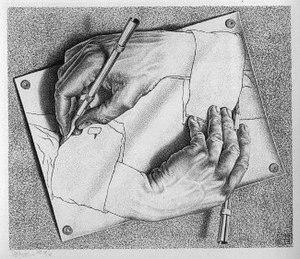Looking through previous post, it becomes clear that more often than not, art has political effects. The art of occupy wall street, the Exit Art museum in NYC, and even political cartoons, are amongst the many examples we have blogged about that use art as a means of political change. In my art history class, I learned of two influential paintings inspired from the horrors war. Goya’s The Third of May,1808 The Execution of the Defenders of Madrid (1814) and Pablo Picasso’s Guerinca (1937). Both artists depict war’s brutality on the innocent Spanish civilians of their respective time periods. In 2006, the two paintings were even showed in the same room at an exhibition at the Prado and the Reina Sofía.
As Napoleon voraciously expanded his power across Europe in the early 1800s, his troops marched into Spain and seized the Spanish throne. Infuriated by the removal of the Spanish royal family to France, the people of Madrid rebelled on May 2, 1808 in the Dos de Mayo Uprising. The French retaliated swiftly and viciously; the next day, hundreds of Spanish peasants were round up and shot. This massacre of civilians is the subject of Goya’s The Third of May, 1808 The Execution of the Defenders of Madrid.

The Third of May, 1808 The Execution of the Defenders of Madrid
Painted in “glowing whites, golds and scarlets against the sombre blacks, greys and browns of the background, the doomed men are immortalized,” explains art critic Robert Hughes. In fact, the only illumination comes from a lone oil lantern at the soldiers’ feet. The stark contrast heightens the painting’s emotional pitch, drawing the viewer towards the young victim with raised arms. Art historians have speculated that the papered lantern functions as the bitter core of the painting. The lantern symbolizes the Enlightenment that Goya, like so many other Spanish civilians, had anticipated the French would bring to Spain. But the French only brought a reign of terror; the lantern is controlled by the French soldiers, as they mercilessly murder innocent peasants; the Enlightenment contorted into evil. Goya employs light to make a bone-chilling point– war is cruelly savage.
A century later, in 1936, the Spanish Civil War erupts. On April 27th, 1937, the little village of Guernica in northern Spain is pounded with bombs for over three hours. 1,600 civilians are left dead or wounded. Pablo Picasso captures this horrific event in Guernica.

Guernica
Picasso refined sketch after sketch to include a remarkable amount of abstract symbols, often holding many contradictory meanings. When asked to explain his symbolism, Picasso remarked, “It isn’t up to the painter to define the symbols. Otherwise it would be better if he wrote them out in so many words! The public who look at the picture must interpret the symbols as they understand them.”
However, Picasso’s alteration of light from good to evil is certainly obvious. Light is the instrument of slaughter in Goya’s painting. In Picasso’s, the bodies seem to be reaching towards the upper left of the canvas, to the evil eye. And in the eye is the merciless glare of a single light bulb. Art historian Simon Schama explains that the bulb is “the incandescence of the exterminating angel, the searchlight of the death squad and the targeting bomber, the bare bulb of the tortuous cell.” The electric light bulb is juxtaposed against the flame of a candle, held straight out by a heroic arm, depicting the battle between the good and the evil lights.
Both Goya and Picasso encountered the monstrosities of war directly. Goya’s The Third of May, 1808 The Execution of the Defenders of Madrid and Picasso’s Guerinca are paintings which remain standing as personal testimonies of war’s vicious cruelties. Each artist utilized their canvases to highlight the brutal victimization of innocent civilians.

 Christiansen also said that “the 15th century is the first great century of portraits”. Before this time period, it was only aristocrats or royalty who had them, and most were made for tombs. (This could very well be where Frans Haals got the idea to start painting for the upper-middle class.) Mr. Christiansen also said that these portraits experiment with “portraiture, and the age-old notion of identity. This is the foundation on which European portraiture is based.” Paintings and sculptures from masters like Donatello, Filipo, Lippi, Boticelli, Mantegna, and Bellini will be displayed, among other artists.
Christiansen also said that “the 15th century is the first great century of portraits”. Before this time period, it was only aristocrats or royalty who had them, and most were made for tombs. (This could very well be where Frans Haals got the idea to start painting for the upper-middle class.) Mr. Christiansen also said that these portraits experiment with “portraiture, and the age-old notion of identity. This is the foundation on which European portraiture is based.” Paintings and sculptures from masters like Donatello, Filipo, Lippi, Boticelli, Mantegna, and Bellini will be displayed, among other artists.









